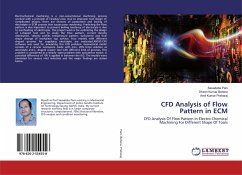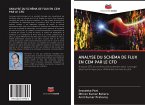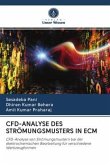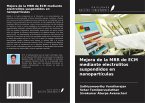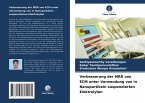Electrochemical machining is a non-conventional machining process worked with a principle of Faraday's law. Due to improper tool design of complicated shapes, there are chances of passivation and boiling of electrolyte in ECM process that causes poor machining. Predicting the flow pattern is also important to prevent boiling tendency of electrolyte is due to overheating of electrolyte. This project work is for optimizing the design of L-shaped tool and to study the flow pattern, current density distribution, velocity profile, temperature pattern, turbulence and final shape change of workpiece top surface. Four models with different shaped grooves for supplying electrolyte are evaluated.ANSYS-CFX software was used for simulating this CFD problem. Geometrical model consists of a circular workpiece made with Iron, 20% brine solution as electrolyte and L- shaped copper tool with different kind of grooves. This problem is considered as a steady- state problem with turbulence model. A potential difference of 10V is applied in between the IEG. The models were simulated for various inlet velocities and the major findings are stated below.
Bitte wählen Sie Ihr Anliegen aus.
Rechnungen
Retourenschein anfordern
Bestellstatus
Storno

